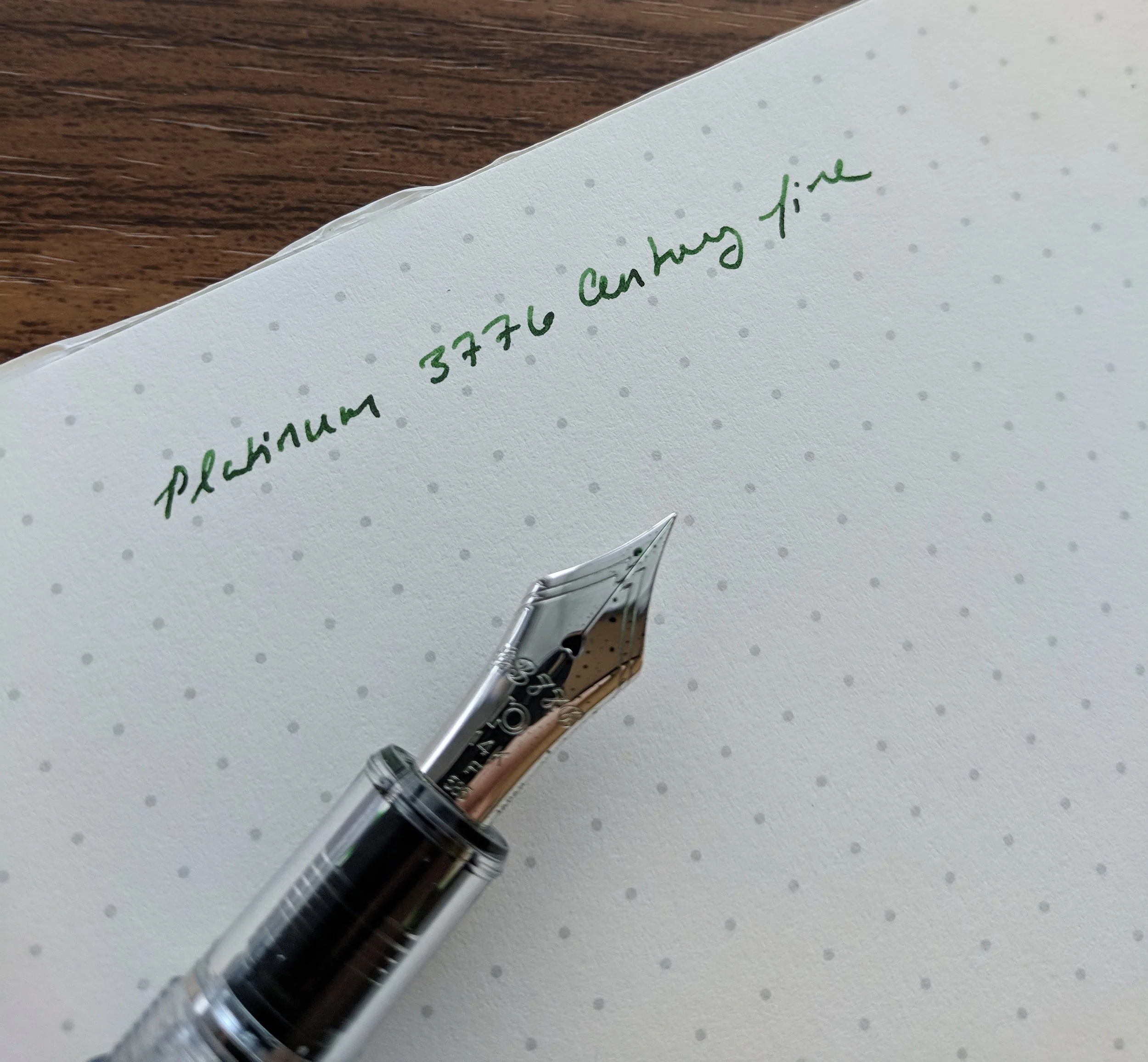With an emergency court proceeding blowing up this week (which means lots of writing!) my two new Platinum Curidas fountain pens received the proverbial baptism by fire. I’m happy to offer you my initial impressions. The general takeaway: The Curidas is a solid retractable fountain pen that feels well-built and is fun to use, but at the end of the day it’s definitely over-engineered and targeted to the pen geek, and certain design choices will almost certainly keep Platinum’s latest release from becoming something that most people are going to want to use every day. I’ll break down my reactions into three categories.
First, The Positives:
Writing Comfort. Based on how I hold the pen, I easily find the Curidas more comfortable than it’s main (or only) competitor, the Pilot Vanishing Point. Whereas the clip on the V.P. runs all the way down to the nib and basically forces you to wrap your fingers around it, Platinum opted to leave additional space for those with a more traditional grip to hold the pen naturally without adjusting for the “bumps” created by a clip or the plastic nub on the bottom of the pen, which also serves as a roll-stop. This is hard to explain, so take a look at the pictures below. If you use a similar grip, you’ll probably be fine. If your grip is different, YMMV.
Build Quality. Platinum makes excellent pens, and the Curidas is no exception. To keep the price below $100, Platinum went with mostly plastic construction, but the pen feels sturdy - not at all inexpensive or flimsy. While I have my own thoughts on the design of the knock (discussed further below), the mechanism deploys and retracts the nib smoothly, and it’s admirable that Platinum managed to keep the price down on a pen with so many moving pieces, all of which must have been custom designed.
Colors and Transparent Materials. I love Platinum’s 3776 demonstrator pens. The colors they use always seem to pop, and the plastic never looks cheap. The Curidas is no exception. I opted for the “Gran Red” and “Urban Green” pens, both of which look great. I normally prefer red pens, but the Urban Green is particularly stunning in person.
The Negatives:
Convoluted and Difficult Assembly. In order to refill the Curidas, you have to completely disassemble the pen, which is no small undertaking. As show in the photo gallery below, this entails removing the back half of the barrel (not a big deal); removing the spring-loaded nib assembly (a little more complicated, since Platinum uses a tongue-and-groove system to secure it); and removing yet another metal piece covering the converter and/or cartridge. It’s a remarkable feat of design and engineering, and it allows you to use the standard Platinum converter, but it creates a lot more complications than the average fountain pen user is going to want to deal with.
Awkward Sizing. With the knock depressed and the nib deployed for writing, the Curidas fits my hand perfectly. The pen is properly weighted and well-balanced for longer writing sessions. The issue I have is with the size of the pen with the nib retracted. I have average-sized hands, and I really have to stretch to use the knock. Plus, it just makes the pen look awkward. Couldn’t they have reduced the length by a centimeter or so?
With the knock extended, the Curidas is an extremely long, and even awkward pen, both in terms of looks and feel. I don’t find the mechanism all that comfortable to use. It’s a stretch to get my thumb over the end.
The So-So:
The Nib. The medium stainless steel nib on the green pen is exceptional, and the fine nib was not. So, overall, a mixed bag. Let’s start with the good; the medium wrote a relatively wide, wet line, that others have accurately described as stubbish. For a stock steel medium nib - typically a very boring option - my green Curidas offers a spectacular writing experience, as long as you get a good one. Now for the bad: the fine nib on my red pen was extremely dry and scratchy out of the box. Curiously, I had the same experience with my Platinum 3776 Ultra-Extra Fine (UEF) nib. Platinum generally has an excellent reputation when it comes to nibs, especially fine and extra-fines, and I’m surprised I’ve had this happen to me on a pen with as much pre-launch hype as the Curidas.
Takeaways and Where to Buy
Obviously, I haven’t had the Curidas in my rotation for very long, but I did put Platinum’s latest release through the paces during a particularly strenuous week of work that involved a lot of writing. Retractable nib fountain pens are generally going to have a very specialized target audience - true pen geeks - and as long as Platinum realizes that casual users may be turned off by the pen’s complexity, I can appreciate Platinum’s efforts to grow the category. That said, the knock design bothers me a lot, both functionally and aesthetically, and I plan to withhold final judgment until I get a better sense of how much I’ll actually use this pen on a day-to-day basis, and whether I hear additional reports of spotty nib quality.
I acquired the Platinum Curidas fountain pens featured in this review from site sponsor Pen Chalet, which still has several colors in stock priced at $80. Platinum does not allow discounting on this pen. Other Platinum retailers (such as site sponsors Vanness Pens, Goldspot, and Appelboom), also carry the Curidas, but availability will likely be uneven given delays in distribution and shipping in light of current events.
Disclaimer: This post contains affiliate links. I am a participant in the Pen Chalet affiliate program, which allows me to earn store credit that I can use to acquire items for review on the blog, like the pens featured here.

















